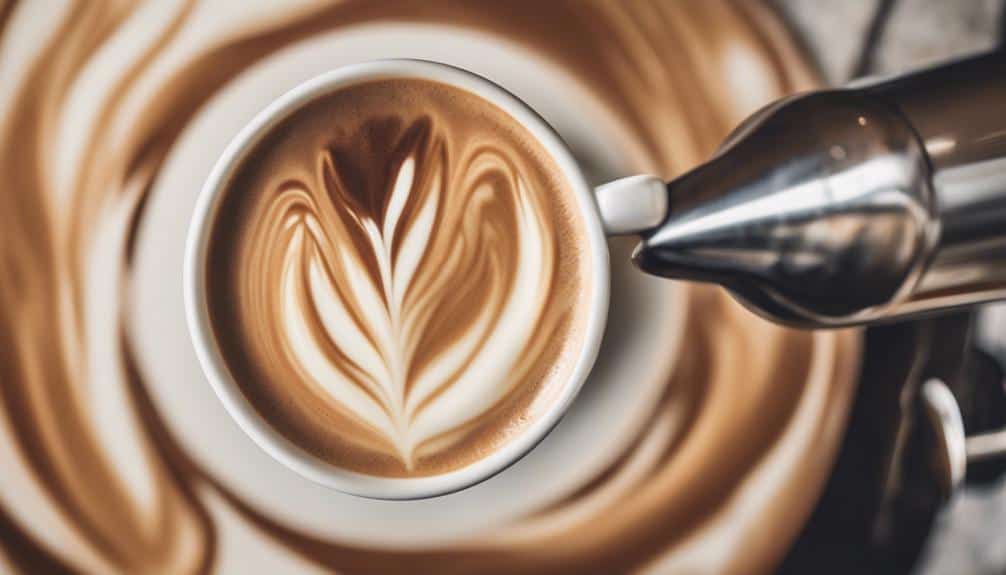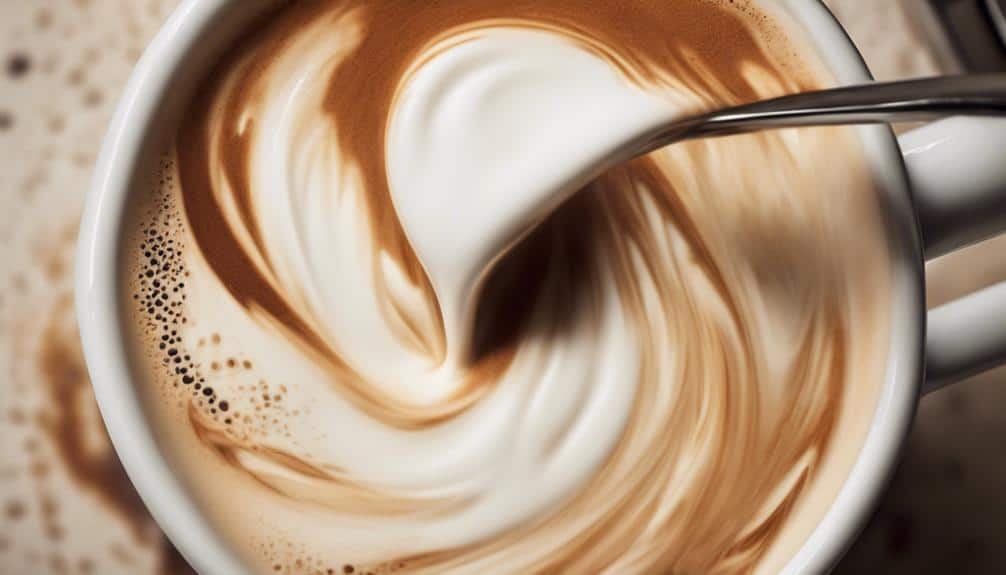What Makes Cappuccino Creamy: Does It Have Milk?

When we savor a cappuccino, we often ponder: what makes it so delightfully creamy? The secret lies in the interplay of espresso, steamed milk, and milk foam.
But here's the twist – does it really have milk? Let's uncover the truth behind the cappuccino's velvety texture and unravel the mystery that adds to its irresistible allure.
The Creaminess of Cappuccino Explained
Exploring the science behind the creamy texture of a cappuccino reveals the critical role played by the steamed milk and milk foam components in achieving its rich consistency. Steamed milk, through the process of heating and texturizing, brings about a smooth and velvety quality to the cappuccino. This smoothness is essential for enhancing the overall richness of the drink.
On the other hand, the milk foam, often referred to as froth, contributes significantly to the creamy mouthfeel and velvety consistency that cappuccino enthusiasts crave. The delicate balance between the steamed milk and milk foam is what creates the signature creaminess that defines a well-prepared cappuccino.
Factors such as the quality of the milk used, the technique employed in frothing, and the precise milk-to-espresso ratio all influence the creaminess of the final product. Understanding the interplay between these elements is crucial for baristas and home coffee enthusiasts alike in achieving that perfect creamy cappuccino experience.
Milk in Cappuccino: Essential or Optional?
In the realm of cappuccino preparation, the inclusion of milk stands as a fundamental necessity rather than a discretionary element, pivotal in delivering the beverage's quintessential creamy essence. When crafting a cappuccino, the process involves steaming milk to create a velvety texture and rich flavor that harmonizes with the strong espresso. The foam on top, achieved by aerating the milk, not only adds a visual appeal but also contributes to the overall mouthfeel of the drink. Whole milk, with its higher fat content, is often preferred in cappuccinos as it produces a creamier and more luxurious foam compared to skim milk. Here is a table summarizing the importance of milk in cappuccino preparation:
| Milk Type | Role in Cappuccino |
|---|---|
| Whole Milk | Contributes to a rich and creamy foam |
| Skim Milk | May produce a lighter and less creamy foam |
| Steamed Milk | Creates a velvety texture |
| Foam Milk | Adds visual appeal and enhances mouthfeel |
Factors Influencing Cappuccino's Creamy Texture

Considering the composition of a cappuccino, the interplay between steamed milk and milk foam serves as a critical determinant of the beverage's creamy texture. When steaming the milk, it's essential to achieve the perfect balance between heating the milk and creating velvety microfoam. The steamed milk contributes a smooth and creamy texture, while the milk foam adds a light and airy consistency to the cappuccino.
Whole milk is often preferred for cappuccinos due to its higher fat content, which enhances the richness and creaminess of the final drink. Skilled baristas use precise frothing techniques to create a fine and consistent microfoam that blends seamlessly with the steamed milk. This careful integration of espresso, steamed milk, and milk foam is crucial for achieving the desired creamy mouthfeel and taste in a cappuccino.
Dairy and Non-Dairy Milk Options for Cappuccino
Our examination of the composition of cappuccino reveals that the choice of milk, whether dairy or non-dairy, plays a pivotal role in determining the beverage's overall texture and flavor profile. When considering milk options for cappuccinos, baristas often prefer whole milk due to its ability to create velvety microfoam and enhance the drink's mouthfeel. On the other hand, oat milk has emerged as a popular non-dairy alternative known for complementing the rich flavors of espresso in cappuccinos. Varieties like 2% milk, soy milk, and almond milk also offer distinct textures and flavors to suit different preferences. However, nonfat milk and coconut milk are not ideal choices as they lack the necessary fat content for producing quality foam. Additionally, heavy cream and half and half are too dense to achieve the desired frothiness in cappuccinos.
| Dairy Milk | Non-Dairy Milk |
|---|---|
| Whole Milk | Oat Milk |
| 2% Milk | Soy Milk |
| – | Almond Milk |
Achieving the Perfect Cappuccino Froth

When aiming to achieve the perfect cappuccino froth, the temperature of the steamed milk plays a crucial role in determining the optimal texture for the beverage.
- Steamed Milk Temperature: Steaming milk to around 65 degrees Celsius is key to creating the ideal cappuccino froth. This temperature allows for the proteins in the milk to properly denature, resulting in a creamy texture that enhances the overall mouthfeel of the drink.
- Milk Fat Content: The fat content of the milk used also significantly impacts the quality of the froth. Whole milk, with its higher fat content, produces a richer and creamier foam compared to lower-fat alternatives. This creamy foam adds a luxurious element to the cappuccino, elevating the drinking experience.
- Frothing Technique: The technique used to froth the milk is crucial in achieving the perfect cappuccino froth. Proper aeration and texturing of the milk create a velvety microfoam that blends harmoniously with the espresso, enhancing the overall flavor profile of the beverage.
Conclusion
In conclusion, the creaminess of a cappuccino is primarily derived from the combination of espresso, steamed milk, and milk foam. Whole milk is preferred for its fat content, which contributes to the desired creamy texture.
While milk is essential for creating the perfect cappuccino, various dairy and non-dairy milk options can be used to customize the froth consistency. Understanding the factors influencing cappuccino's creaminess is key to achieving the perfect balance of flavors and textures in this classic coffee drink.





